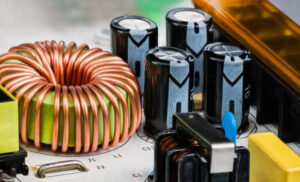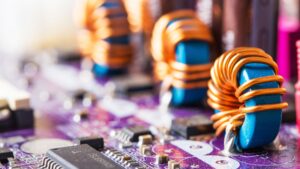Introduction
Power electronics is a cornerstone of contemporary technology, deeply integrated into a wide range of applications that influence our everyday life. This specialized field, which combines electrical engineering with cutting-edge technology, plays a vital role in the effective control and conversion of electric power. From the tiniest home appliances to massive industrial equipment, power electronics ensures these systems function at their best, capturing and adjusting electrical energy to fulfill a variety of requirements.
This article will delve into the fundamental concepts, main components, and recent developments in power electronics. We’ll scrutinize its influence on different sectors and the hurdles and prospects it brings in our swiftly progressing tech-driven world. This comprehensive guide aims not only to educate but also to highlight the importance of power electronics in our progressively electrified world.
Explanation and Fundamental Principle
Power electronics is identified as a specialized area of electrical engineering that is concerned with the regulation and transformation of electrical power through the application of solid-state electronics. Fundamentally, it is about directing the flow of electrical energy from its origin to its destination in a manner that is efficient, dependable, and compact. This discipline stands out due to its emphasis on managing higher power levels, in contrast to general electronics, which typically handle lower power signals.
Three fundamental concepts form the foundation of power electronics: solid-state electronics, power conversion, and control. Solid-state electronics involve the use of semiconductor devices such as diodes, transistors, and thyristors to regulate and switch electrical energy. Power conversion is the process of altering electrical power from one state to another, for instance, AC to DC, DC to AC, or adjusting the voltage and current levels. Control in power electronics pertains to adjusting the output to satisfy specific criteria, which can encompass elements like voltage regulation, power factor correction, and the smoothing of power delivery.
These concepts allow power electronics to manage and convert electrical energy efficiently across a broad spectrum of applications, establishing it as a vital technology in today’s world. As we persist in expanding the limits of what is achievable in power management and conversion, power electronics remains at the vanguard, propelling innovation and efficiency in everything from consumer electronics to industrial systems.
Journey and Progression of Power Electronics

The evolution of power electronics is an intriguing story of progress and transformation, spanning from the early 20th century to the present era. This chronology of significant milestones has witnessed the field advance from basic rectifiers to the complex Insulated Gate Bipolar Transistors (IGBTs) and Metal-Oxide-Semiconductor Field-Effect Transistors (MOSFETs) of our time.
In the early 1900s, the groundwork for power electronics was established with the introduction of rectifiers, devices that convert alternating current (AC) to direct current (DC). These initial rectifiers, constructed from vacuum tube diodes and subsequently selenium plates, were instrumental in the early phases of power conversion technology.
The mid-20th century saw a substantial advancement with the emergence of silicon-based semiconductor devices. The invention of the thyristor, or silicon-controlled rectifier (SCR), in the 1950s signified a pivotal moment. This facilitated more efficient and controllable power conversion, laying the foundation for a variety of applications, from motor drives to power transmission.
The 1970s and 1980s marked the rise of power MOSFETs and IGBTs, which revolutionized power electronics with their enhanced efficiency, quicker switching speeds, and increased reliability. These components became the cornerstone of contemporary power electronic systems, facilitating compact, energy-efficient designs.
A defining moment in the history of power electronics was the invention of the variable frequency drive (VFD). This technology, which adjusts the speed of an electric motor by altering the frequency and voltage of its power supply, has had a significant impact on energy conservation and operational efficiency in industrial applications.
Another notable progression was the integration of digital control technologies in the 1990s. The inclusion of microcontrollers and digital signal processors (DSPs) enabled more accurate and flexible control schemes, further improving the efficiency and capabilities of power electronic systems.
The progression of power electronics has been intimately linked to technological advancements in materials science, semiconductor technology, and control theory. The transition from silicon to wide-bandgap materials like silicon carbide (SiC) and gallium nitride (GaN) in recent years has ushered in new possibilities. These materials provide higher efficiency, greater power density, and the capacity to operate at elevated temperatures and voltages, broadening the capabilities and applications of power electronics into areas like renewable energy systems, electric vehicles, and smart grids.
Reflecting on the historical development of power electronics, it’s evident that each technological innovation has not only improved the performance of power electronic systems but also broadened their application range, playing a vital role in the progression of a multitude of industries and technologies.
To delve deeper into power electronics, please continue reading Part 2 of this topic here.


